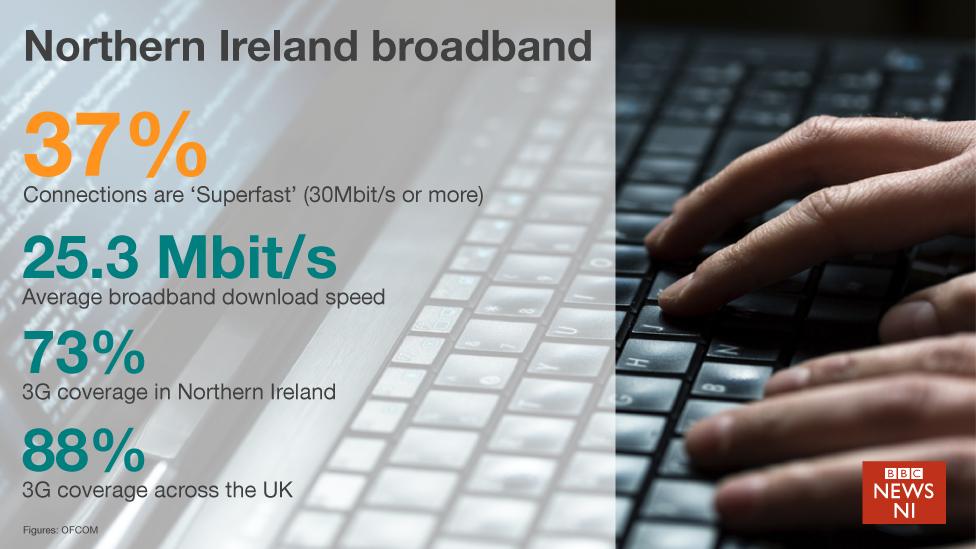Broadband: Big differences in speeds across Northern Ireland, report says
- Published
Average download speeds are almost twice as high in urban than rural areas.
A new report has highlighted big differences in broadband speeds across Northern Ireland, with areas worst served located in the west.
The UK's communications regulator Ofcom says there are challenges in improving coverage.
Average download speeds are almost twice as high in urban than rural areas.
Ofcom estimates the Wi-Fi connection may "not be working as well as it could" in more than 160,000 homes here.
Deterioration
Ofcom's report, external says broadband speeds are highest in the Belfast City Council area and lowest in the Fermanagh and Omagh District Council area.
The Mid-Ulster District Council area is next poorest, followed by the area covered by Newry, Mourne and Down District Council.
Ofcom says people in rural areas "see a greater deterioration in speeds due to longer line lengths".

More than one in three Northern Ireland broadband connections (37%) are superfast - a connection of 30Mbit/s or more.
But about 6% of premises receive speeds of less than 2Mbit/s.
Overall average download speeds in Northern Ireland improved by 19% over the course of 2015.
Widest
The report also says 3G coverage has increased by 10%.
Coverage in Northern Ireland is now said to be 73%, compared with 88% in the UK.
It says the mobile provider EE currently has the widest geographic coverage for voice and data services.
Northern Ireland has fewer 'voice not spots' - areas where there is no mobile coverage - than the UK as a whole.
Ofcom has released its Wi-Fi Checker mobile app that allows users to find out the quality of their wireless internet signal.
- Published10 November 2015